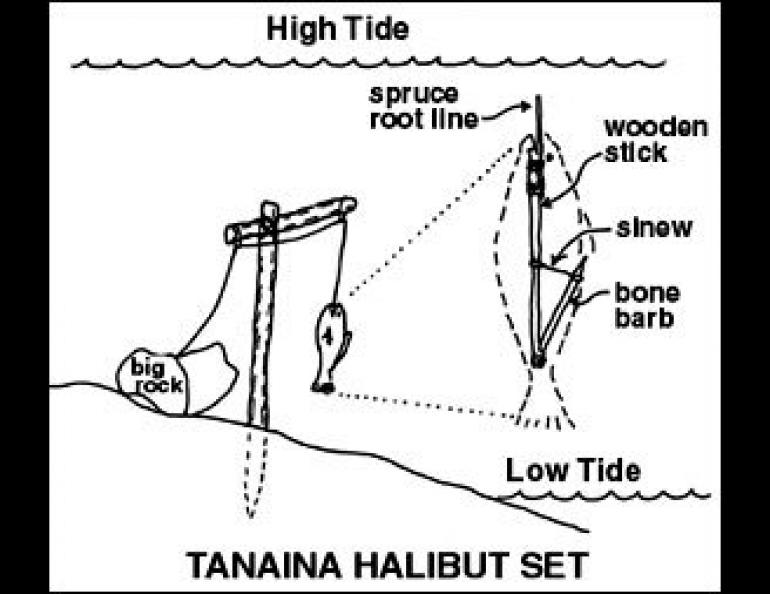
Halibut Fishing
The Tanaina Indians who originally inhabited the area took advantage of Cook Inlet's high tides to fish for halibut without going offshore. According to Cornelius Osgood who studied the early day peoples of this area, halibut remain in deep water in winter, but in summer do come into the shallow waters of Kachemak Bay. Elsewhere in Cook Inlet, he says, halibut were either unavailable or at least were not caught.
The Tanaina men drove a stake into the beach at low tide, leaving about three feet above ground. To the top of this stake, they tied a short stick. On a spruce root line a large hook was suspended from the end of the stick to a height of one foot above the beach. The spruce root line extended along the stick and down the vertical stake to where it was tied to a very large rock, a rock so heavy that two men could just carry it .
A humpback salmon fourteen to sixteen inches long was split open so that the hook could be inserted with the barb sticking out of the salmon's back a short distance. The bait and hook were intended to be large enough to discourage the smaller halibut but not the big ones. After the tide came in and a big halibut took the hook, the fish usually broke the array of sticks, but hopefully not the spruce root line. Then as the tide went out the big fish would be left stranded on the beach, ready for the women to clean and cut up. Not only were the Tanaina men clever in the wiles of fishing, they had a proper sense of proportion in the division of labor between the sexes.





